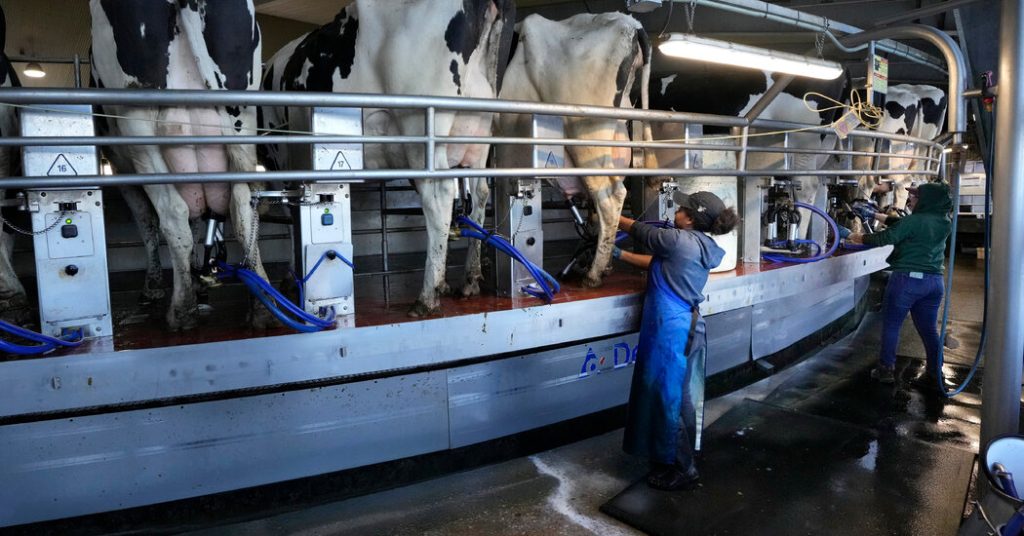Federal regulators have discovered fragments of the bird flu virus in 20% of retail milk samples in a recent study. The samples from areas with infected dairy herds were more likely to test positive. However, experts confirm that the traces of the virus in milk do not pose a risk to consumers, and there is no live virus present on store shelves. Despite this, the high percentage of positive samples indicates a widespread outbreak of the virus, with concerns about how the virus is spreading undetected and the need for effective control measures to be implemented.
Virologist Richard Webby believes that it is still possible to eradicate the H5N1 virus from the nation’s dairy farms, but this will be challenging without a clear understanding of the outbreak’s scope. Federal testing strategies have been criticized for being limited in revealing the true extent of viral spread, with voluntary testing of cows being the primary focus until recently. With mandatory testing now in place for dairy cows moving across state lines, experts hope to gain a better understanding of the situation and prevent further outbreaks that could pose risks to farmworkers and public health.
Despite the detection of viral fragments in milk samples, experts suggest that the process of pasteurization should inactivate the virus, making the milk safe for consumption. Microbiologist Samuel Alcaine explains that the genetic material left behind after pasteurization is not capable of causing infection, and the presence of these fragments does not mean that the milk is unsafe. Tests are underway to determine if any viable virus remains in milk after pasteurization, but scientists believe this is unlikely, based on previous findings.
The Director of the National Institute of Allergy and Infectious Diseases, Dr. Jeanne Marrazzo, reported that researchers have not found any live virus in retail milk samples, indicating that pasteurization has effectively killed the virus before it reaches grocery shelves. However, further testing is needed to fully understand the scope of the situation. While the 20% positivity rate in commercial milk samples may suggest a widespread infection among dairy herds, experts advise against making premature calculations about the extent of the outbreak until more data is available.
Efforts are ongoing to examine milk at various points in the commercial supply chain to understand how the virus is being transmitted and if there are differences in milk products that may affect the presence of the virus. The novelty of the research effort is highlighted by the lack of previous studies on the effects of pasteurization on the bird flu virus in milk. As regulators continue their investigations, it is essential to monitor the situation closely and implement measures to prevent further spread of the virus in dairy cows and the broader population.















